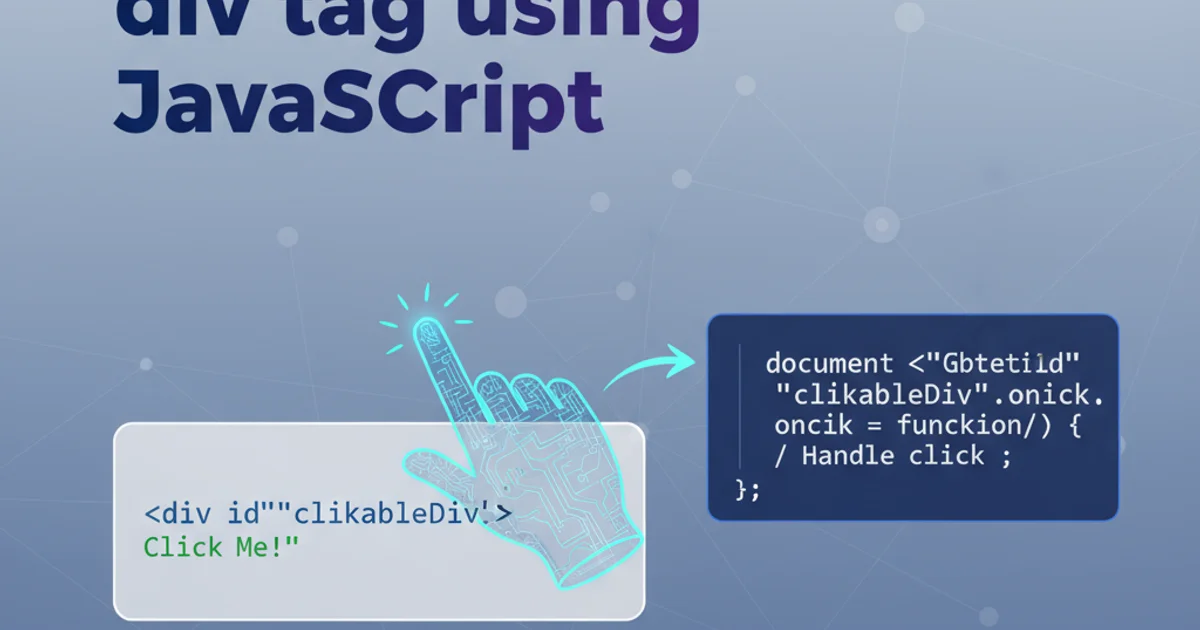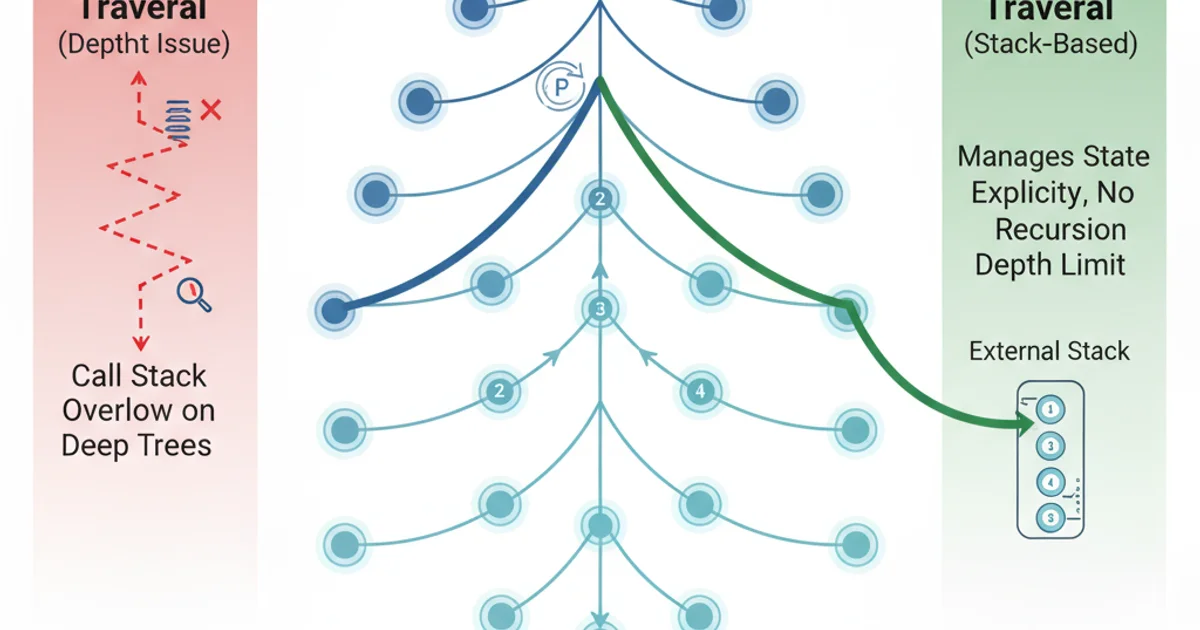Iterative preorder k-ary tree traversal
Categories:
Iterative Preorder Traversal for K-ary Trees

Explore the iterative approach to performing a preorder traversal on k-ary trees, understanding its logic, implementation, and advantages over recursive methods.
Tree traversals are fundamental operations in computer science, used to visit each node in a tree data structure exactly once. While binary trees are common, k-ary trees (where each node can have up to 'k' children) are also prevalent in various applications, such as file systems, organizational charts, and game trees. Preorder traversal, specifically, visits the current node first, then recursively (or iteratively) traverses its children. This article focuses on an iterative approach to preorder traversal for k-ary trees, which can be more memory-efficient than recursion for deep trees by avoiding excessive stack usage.
Understanding Preorder Traversal
Preorder traversal follows a 'Root-Left-Right' (or more generally, 'Root-Children') pattern. For a k-ary tree, this means:
- Visit the current node.
- Traverse all its children from left to right (or in a defined order).
The iterative approach typically uses a stack to keep track of nodes to visit. When a node is visited, its children are pushed onto the stack in reverse order (right to left) to ensure they are processed from left to right. This is a crucial detail for maintaining the correct traversal order.
flowchart TD
A[Start Traversal]
B{Is Stack Empty?}
C[Pop Node from Stack]
D[Visit Node]
E{Has Node Children?}
F[Push Children to Stack (Right to Left)]
G[End Traversal]
A --> B
B -- No --> C
C --> D
D --> E
E -- Yes --> F
F --> B
E -- No --> B
B -- Yes --> GFlowchart of Iterative Preorder Traversal Logic
Implementing Iterative Preorder Traversal
To implement this, we'll need a Node class that can hold a value and a list of children. The traversal function will take the root of the tree as input. The core idea is to initialize a stack with the root node. Then, in a loop, pop a node, process it, and push its children onto the stack. Since we want to process children from left to right, we must push them onto the stack from right to left. This ensures that when we pop them later, the leftmost child is processed first.
class Node:
def __init__(self, value):
self.value = value
self.children = []
def iterative_preorder_traversal(root):
if not root:
return []
result = []
stack = [root]
while stack:
node = stack.pop()
result.append(node.value)
# Push children onto the stack in reverse order
# to process them from left to right
for child in reversed(node.children):
stack.append(child)
return result
# Example Usage:
# Construct a sample k-ary tree
root = Node('A')
nodeB = Node('B')
nodeC = Node('C')
nodeD = Node('D')
nodeE = Node('E')
nodeF = Node('F')
nodeG = Node('G')
root.children.extend([nodeB, nodeC, nodeD])
nodeB.children.extend([nodeE, nodeF])
nodeD.children.append(nodeG)
# Perform traversal
traversal_output = iterative_preorder_traversal(root)
print(f"Preorder Traversal: {traversal_output}")
# Expected Output: ['A', 'B', 'E', 'F', 'C', 'D', 'G']
Python implementation of iterative preorder traversal for a k-ary tree.
Advantages and Considerations
Iterative traversal offers several advantages, particularly in environments with strict memory limits or when dealing with very deep trees where recursion might lead to a RecursionError (stack overflow). It provides more control over the execution flow and memory usage.
However, the iterative approach can sometimes be less intuitive to write and debug compared to its recursive counterpart, especially for beginners. The choice between iterative and recursive methods often depends on the specific problem constraints, language features, and developer preference.

Iterative traversal helps avoid recursion depth limits in deep trees.